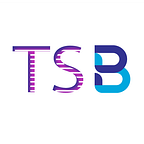Blockchain and IoT in smart healthcare
Healthcare is an essential part of life, and technology is disrupting this space day in and day out. The current technology in healthcare and the general practice of medicine can be enhanced with the use of IoT systems. Let’s understand how the IoT systems and smart devices can improve healthcare services and create a positive impact on our health:
Simultaneous monitoring and reporting: IoT health devices have the potential to collect real-time information of the patient and report this to the physician remotely. The IoT devices can collect information like blood pressure, heart rate, blood glucose level, etc., of a patient and store it on the cloud, and then this information can be shared with the authorized healthcare professional. This technology can save unnecessary clinical visits, allow healthcare providers to provide better care to their patients, and even facilitate remote consultation irrespective of place or time.
Essentially, these devices can improve access to healthcare resources while reducing strain on healthcare systems and can give people better control over their health at all times. Another essential advantage of IoT devices is that healthcare professionals can remotely analyze emergency situations like heart attacks and asthma. The healthcare providers can even get access to the patients’ profiles way before their arrival because of which they can deliver essential care to the patients on time. In this way, associated losses are reduced, and emergency health care is improved.
Blockchain and IoT
But there are certain challenges that IoT devices face, and Blockchain technology can help in overcoming these challenges. For instance,
1. Improves security: IoT smart devices capture data in real-time and store this data on the cloud. The biggest challenge of storing data on a centralized and cloud system is its security and privacy. A patient’s data in such a scenario is susceptible to hacking, which can compromise his personal health information. The patient’s data can then be used to create fake IDs to buy drugs and can even be used to file fraudulent insurance claims. Blockchain can provide the required solution to solve security issues faced by IoT devices as the data stored on Blockchain will be resistant to hacking and tampering.
2. In case multiple IoT devices have to be integrated, it becomes a challenge because different devices have different data communication protocols and different processing power, which slows down the whole process and thus, reduces the scope of IoT in healthcare. Blockchain offers a solution for this, but because of the limited processing power of IoT devices, these cannot be directly connected to the Blockchain as high computing power is required for communicating with Blockchain. There needs to be an intermediary which can connect these IoT smart devices to Blockchain. This intermediate system can be a cloud system which has high computational power and can collect the data from sensors and transfer it to the Blockchain.
In the Blockchain-powered system, a person will get a unique ID mapped to the Blockchain. He can specify who can see his information collected from smart devices. In the case of multiple IoT devices, he can also choose the IoT devices whose data should be shared with the healthcare provider.
3. Better integration of data of IoT devices with Electronic Healthcare Records: IoT smart health wearables like fitbits, health bands, watches, blood glucose monitors record the daily data and activities of a user like calories, step counts, miles, heart rate, quality of sleep, blood pressure, blood glucose level, etc. With Blockchain technology, all this daily data from a user’s smart health devices can be clubbed with the user’s Electronic Health Records (EHRs). These devices collect the real-time data of a user, and because of which doctors can see a patient’s condition in real-time. As data is acquired continuously, there is no need to conduct all the tests when patients visit the hospital. This will reduce the costs of conducting basic tests and save valuable time for both doctor and the patient. Thus, integrating IoT devices with EHRs could be a boon for emergency cases where providing timely treatment is the biggest challenge.
If you liked this article and want to know more about Blockchain, NFTs, Metaverse, and their applications, click the below link.
Happy learning!
